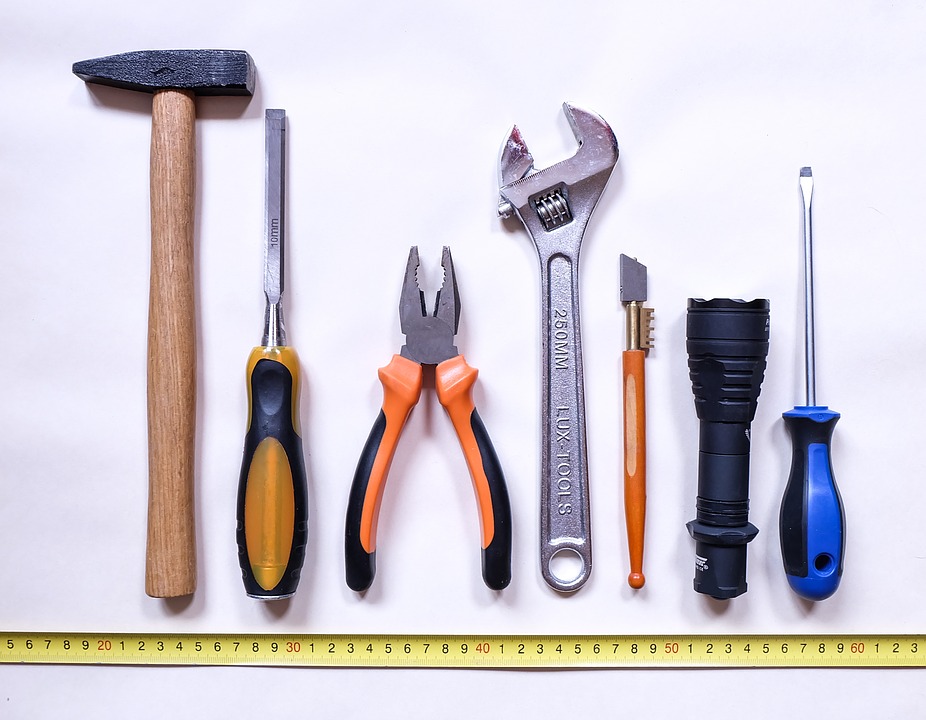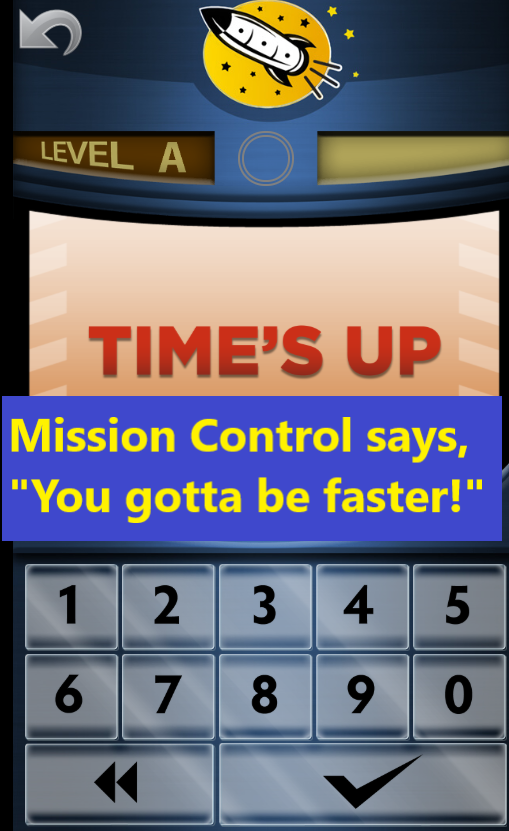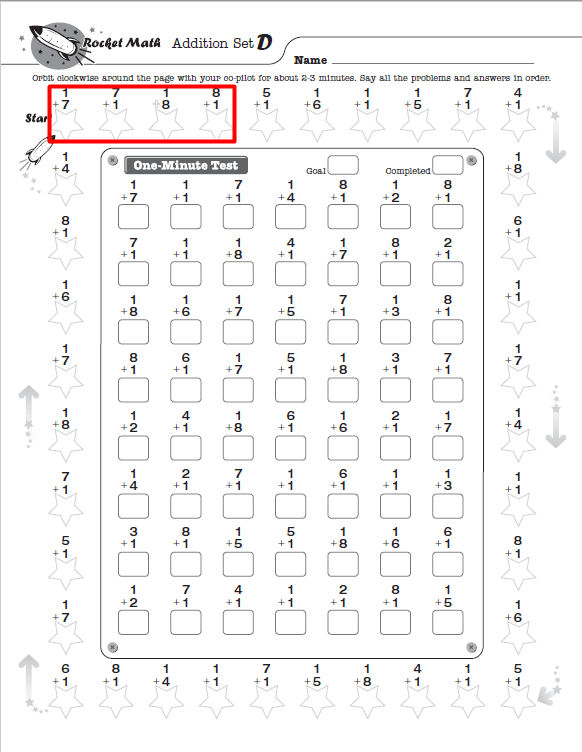Above are students playing our Race for the Stars game. This game prompts everyone to race against each other and the clock to answer 24 fact problems as fast as they can. This activity can help develop automaticity of math facts. Not all activities in which students “practice” answering math facts will help develop automaticity. In fact, a lot of math fact practice activities require students to “figure out” math facts over and over. Automaticity only comes about through recall. Recall is instantaneous, whereas “figuring out” takes time. All the activities that give students “time” to derive the fact will not help develop automaticity.
What is automaticity?
 Automaticity is the level of learning you have achieved when you can do something accurately and quickly while you are doing something else. It is “automatic” because you don’t have to stop and think about it; you can do it while concentrating on something else. As the picture illustrates, you need to develop automaticity to function in a marching band, which is why it takes a lot of practice. You have to march while simultaneously playing music and keep up with everyone else. That takes automaticity.
Automaticity is the level of learning you have achieved when you can do something accurately and quickly while you are doing something else. It is “automatic” because you don’t have to stop and think about it; you can do it while concentrating on something else. As the picture illustrates, you need to develop automaticity to function in a marching band, which is why it takes a lot of practice. You have to march while simultaneously playing music and keep up with everyone else. That takes automaticity.
What is automaticity good for?
 In academics, students use certain “tool skills” while they are multitasking. These tool skills must become automatic so students can use them without thinking. One tool skill is decoding in reading–getting the words off the page. That has to be automatic so the reader can focus on the message of the material they are reading. Spelling is another tool skill that has to be automatic. A student who is writing something should not be distracted by trying to remember how to spell the words they are writing.
In academics, students use certain “tool skills” while they are multitasking. These tool skills must become automatic so students can use them without thinking. One tool skill is decoding in reading–getting the words off the page. That has to be automatic so the reader can focus on the message of the material they are reading. Spelling is another tool skill that has to be automatic. A student who is writing something should not be distracted by trying to remember how to spell the words they are writing.
Why is automaticity of math facts important?
 In math, the tool skill that must be automatic is remembering math facts. Students must be able to recall the answer to single digit facts like 9 + 7 while simultaneously doing more complex problems. They need to be able to recall those facts without losing their place in what they are computing, just like a member of a marching band.
In math, the tool skill that must be automatic is remembering math facts. Students must be able to recall the answer to single digit facts like 9 + 7 while simultaneously doing more complex problems. They need to be able to recall those facts without losing their place in what they are computing, just like a member of a marching band.
No matter how clever the strategy for remembering a math fact, if it is not recalled instantly and automatically, it disrupts the thinking process of the learner. The steps in the overall math procedure will become confusing, or the point of the computation may be lost. Strategies for developing automaticity must guard against allowing students to repeatedly “figure out” facts and must direct them to “just remember” the fact. This can be a surprise for some teachers and some students!
Practice strategies that develop automaticity of math facts
 Students can recall some facts instantly but have not yet learned others enough to be recalled instantly. New math facts are learned one at a time. Although most students can work on memorizing three or four new facts at a time, if the facts are too similar, even three will be too many.
Students can recall some facts instantly but have not yet learned others enough to be recalled instantly. New math facts are learned one at a time. Although most students can work on memorizing three or four new facts at a time, if the facts are too similar, even three will be too many.
The best method of practice is to read problems aloud and say the answer from memory. If there is any hesitation after the problem is read aloud (which gives the learner enough time to remember) then extra practice is needed on that fact. The procedure should happen immediately, as there is no time to waste. The learner needs to understand that the goal is to instantly recall facts, rather than puzzle them out.
Figuring out math facts will not develop automaticity
 Allowing students extended time to work out the answer to a math fact teaches the wrong lesson. If there is any hesitation in answering, extra practice should involve being told the fact and the answer immediately (no more puzzling it out, is the message!). After hearing the correct answer, the learner should say the problem and the answer aloud two or three times. They should then go on and practice two or three different problems before returning to the problem that the learner was slow to answer. And finally, the learner should try to answer the first math fact again, this time without any hesitation. This process of being told the answer, trying to commit it to memory and trying to recall it a few seconds later will develop automaticity of math facts. Consistently allowing students extended time to figure out facts will not lead to automaticity.
Allowing students extended time to work out the answer to a math fact teaches the wrong lesson. If there is any hesitation in answering, extra practice should involve being told the fact and the answer immediately (no more puzzling it out, is the message!). After hearing the correct answer, the learner should say the problem and the answer aloud two or three times. They should then go on and practice two or three different problems before returning to the problem that the learner was slow to answer. And finally, the learner should try to answer the first math fact again, this time without any hesitation. This process of being told the answer, trying to commit it to memory and trying to recall it a few seconds later will develop automaticity of math facts. Consistently allowing students extended time to figure out facts will not lead to automaticity.
Similarly, the Rocket Math Online Game only allows students 3 seconds to input an answer. If they can’t answer instantly, automatically, then the game shows, “Time’s Up!” and Mission Control says, “You gotta be faster!” Next, the game gives the student extra practice on that fact and starts them over in the part. The game expects automaticity of math facts and teaches students that they can in fact do that.
Students will be able to remember and recall the answer, as long as only a couple of new facts are introduced at a time. They will come to realize that instant recall is possible, and that is their goal. Once they can recall facts without having to figure them out, math will become a breeze.
Use Rocket Math’s automatic response worksheets for testing not teaching
The Rocket Math Worksheet Program has students practice in pairs as described above. Then each day the pair will do timed or “automatic response” worksheets—but as a test. The worksheets proceed from A to Z as students learn more facts in the operation. Each worksheet only tests the facts introduced thus far. Students practice the same set of facts, using the oral procedure outlined above until all of the facts introduced thus far are automatic.
 What facts are on each math worksheet matter. A worksheet cannot contain a mix of all of the facts in an operation; you cannot expect facts to become automatic by doing the sheet repetitively. No one can learn 80 facts at once. The curriculum must break down the facts in an operation into bite-size pieces so that students can practice and learn them. You see here set D, which has added 7+1 and 8+1 and their reverses as new facts. The One-Minute Test only presents the facts learned up through set D. For the first couple of days, the student will not be able to answer all the facts instantly; but after a few days of practice, the students will be automatic with all the facts. Then the student will pass the set. The curriculum should add more facts to be learned in the next set.
What facts are on each math worksheet matter. A worksheet cannot contain a mix of all of the facts in an operation; you cannot expect facts to become automatic by doing the sheet repetitively. No one can learn 80 facts at once. The curriculum must break down the facts in an operation into bite-size pieces so that students can practice and learn them. You see here set D, which has added 7+1 and 8+1 and their reverses as new facts. The One-Minute Test only presents the facts learned up through set D. For the first couple of days, the student will not be able to answer all the facts instantly; but after a few days of practice, the students will be automatic with all the facts. Then the student will pass the set. The curriculum should add more facts to be learned in the next set.
Slow and steady wins the race. It takes months to learn all of the facts in an operation to the level of automaticity, but everyone can do it.

